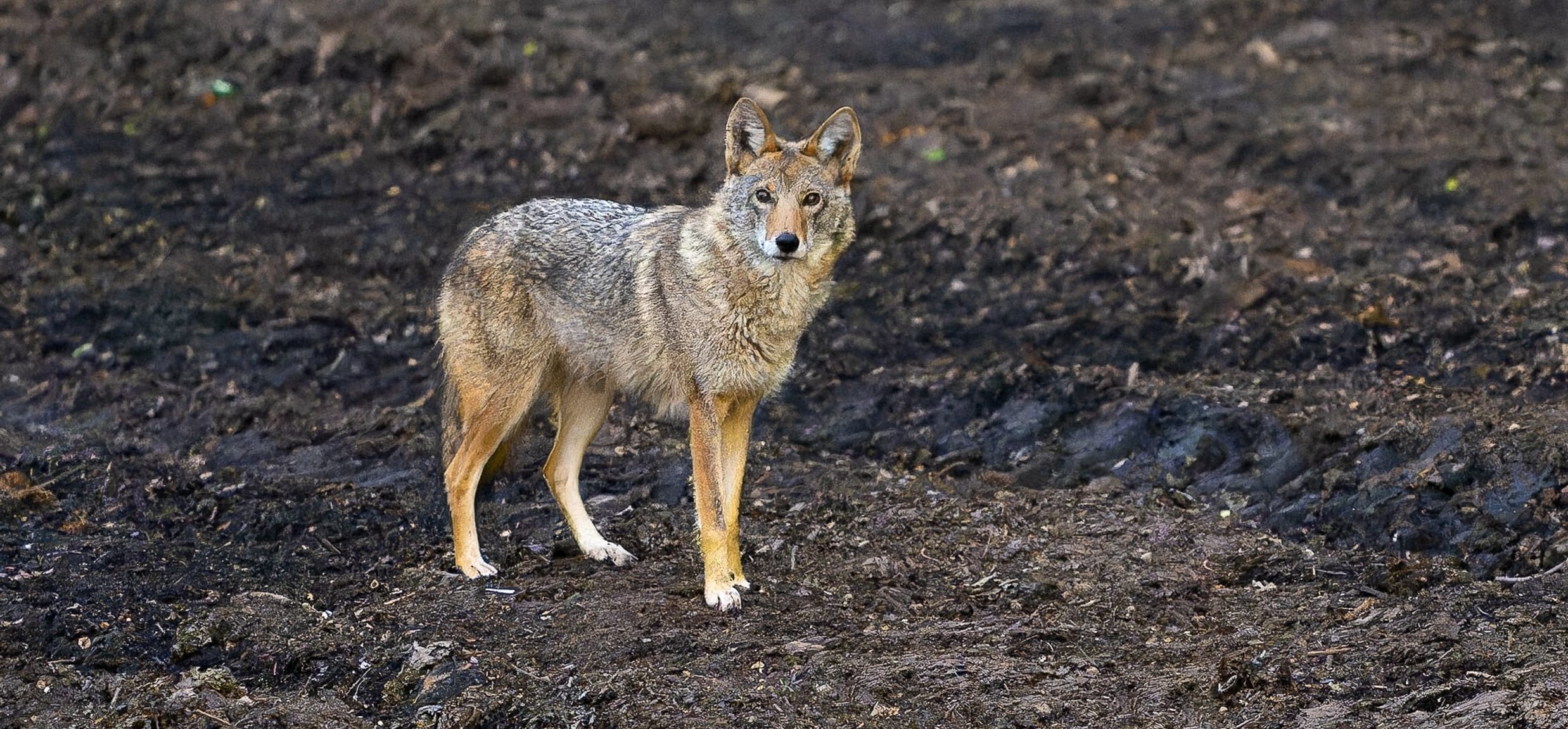Coyotes in Central Park

Central Park is New York City’s backyard, and it hosts a diverse array of wildlife native to our region. This includes coyotes.
Coyotes have been in and around New York City since the 1930s and have been spotted in areas like the Ramble and North Woods. Here are some common questions about coyotes in the Park, including tips on how to appreciate them safely (and a few facts about these unexpected neighbors).
How can you identify a coyote?
Like domesticated dogs and wolves, coyotes are canines. Compared to dogs, coyotes have longer legs, more pointed snouts, and sleeker profiles.
What do coyotes eat?
Coyotes eat what’s easiest to find, shifting their diet to what’s available, including rodents, birds, vegetation, insects, and carrion. Do not feed coyotes in the Park or elsewhere, and be careful to put any trash or food scraps in trash or recycling bins.
Are coyotes dangerous?
You may be surprised to learn that coyotes are shy animals; they’re very good at avoiding humans. However, if a coyote feels threatened it will try to defend itself. The best thing to do if you spot a coyote in the Park is to stay calm and stay at a distance. You can observe the animal while also respecting its space (stay back at least 150 feet, if possible). Do not approach the coyote.
If you are approached, it is important to keep coyotes wary. Coyote hazing guidelines recommend standing your ground, making yourself look bigger by raising your arms, creating loud noises, being persistent, and varying your tactics until the coyote retreats.
Will a coyote harm my pet?
It’s best to keep dogs leashed when in Central Park, even during courtesy off-leash hours. This is both for their safety and the safety of other Park visitors. Leashing is especially important when it comes to coyotes; make sure that your dog stays within your sight at all times. Coyotes are more active at night, however they aren’t strictly nocturnal so you may encounter one roaming during the day.

Are there coyote pups in the Park?
It’s very possible that coyotes may raise pups in the Park. Mating season begins late winter (January–March), and females give birth about two months later. Like all mothers in the animal kingdom, coyotes are protective of their young and should be given extra space if spotted with their pups. It’s totally normal to see young, adventurous pups roaming around during the day. Don’t worry, this doesn’t mean they are sick or rabid!
What if there’s a sick coyote?
The Central Park Conservancy cares for the Park itself, which is home to an array of wildlife. While we’re stewards of the habitat, our staff is not trained or authorized to interact with or rehabilitate wildlife. If an animal is injured, in danger, or posing a threat to humans, contact NYC Parks’ Urban Rangers by calling 311.
For healthy wildlife observation, including coyote sightings, visit WildlifeNYC to submit details about the sighting and location using the Report a Sighting form.
At 843 acres, there’s plenty of Park for all to enjoy! We can appreciate the beauty of these wild animals, as well as the natural beauty of Central Park, as respectful spectators.